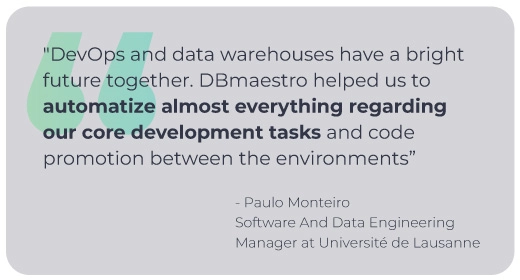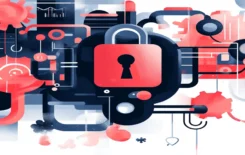The world of databases has undergone a seismic shift. We have moved from what can be described as the “Romantic Era”—where only the database administrator (DBA) had the authority and credentials to modify database structures using SQL commands—to a new reality defined by agility, modernization, and a multitude of data stakeholders. This transition has created both opportunities and challenges, requiring new methodologies, tools, and governance structures to ensure that database management remains secure, efficient, and scalable.
At the heart of this transformation is the need for greater collaboration, speed, and efficiency in database development and release management. Organizations are no longer operating in an environment where databases are managed in isolation; they are part of a broader DevOps strategy where multiple personas, including DBAs, data architects, developers, project managers, data scientists, and security teams, contribute to database evolution.
The “Romantic Era” of Databases
In the early days of database management, DBAs reigned supreme. Database changes were carefully planned, executed manually using SQL commands, and rigorously controlled to prevent errors. This centralized approach provided significant advantages:
- Strict Change Control: Only authorized DBAs could implement modifications, ensuring a high level of oversight.
- Minimal Stakeholders: Fewer people had access, reducing the risk of conflicting changes or errors.
- Predictability and Stability: Database updates followed a slow, methodical process, ensuring reliability.
However, as businesses demanded faster time-to-market, real-time insights, and increased agility, this traditional model began to show cracks. The rigidity of the “Romantic Era” led to significant bottlenecks, slowing down innovation and making it difficult for organizations to keep pace with modern development cycles.
Additionally, organizations faced long queues for database changes, as DBAs struggled to keep up with the demand. Changes could take weeks—or even longer—to implement, making it impossible for businesses to respond quickly to market shifts. Attempts to speed up the DBA-driven change process often resulted in errors, security vulnerabilities, and even costly downtime. This inability to adapt swiftly hindered true agility, placing companies at a disadvantage in today’s competitive landscape.

The Modern Agile Era: A Multi-Stakeholder Landscape
Today, databases are no longer the sole domain of DBAs. Instead, they have become an integral part of a broader data ecosystem involving:
- Developers: Making frequent schema changes as part of CI/CD pipelines.
- QA Teams: Working with multiple database versions for testing.
- Data Scientists and AI Modelers: Accessing and modifying data for analytics and machine learning.
- Project Managers: Overseeing releases and ensuring business objectives align with technical changes.
- Security Teams: Ensuring compliance with regulatory requirements.
This shift has necessitated careful collaboration among these distributed stakeholders, many of whom operate across different time zones, teams, and business units. Without the right coordination and governance, multiple teams working on the same database risk introducing conflicts, inconsistencies, and security gaps.
This evolution has led to several critical challenges:
- Version Control Issues: With multiple teams accessing databases, keeping track of different versions for testing, reporting, and AI modeling has become complex.
- Increased Security Risks: More users with database credentials mean a higher risk of unauthorized changes and potential data breaches.
- Collaboration Bottlenecks: Without proper tools, multiple teams working on the same database can create conflicts and inefficiencies.
- Regulatory Compliance Challenges: Organizations must ensure that database changes align with industry standards like GDPR, HIPAA, and SOX.
DBmaestro: A Multi-Constituency Platform for Database DevOps
To address these challenges, organizations need a platform that enables seamless collaboration, automation, and governance. DBmaestro provides a multi-constituency platform, offering significant value across multiple personas by:
- Facilitating Collaboration Across Teams
- DBmaestro ensures that developers, DBAs, QA teams, and security professionals can work together without stepping on each other’s toes.
- It provides a structured workflow that allows changes to be reviewed, approved, and implemented efficiently.
- Role-based access controls ensure that only authorized stakeholders can make modifications, reducing risks associated with unauthorized access.
- Automating Database Release Management
- The platform streamlines database deployments by automating version control, change tracking, and release processes.
- This reduces human errors, eliminates bottlenecks, and accelerates development cycles.
- Continuous integration and delivery (CI/CD) principles are extended to database management, aligning it with modern DevOps best practices.
- Enhancing Security and Compliance
- DBmaestro enforces strict role-based access controls, ensuring that only authorized personnel can make changes.
- It provides an audit trail for all modifications, ensuring compliance with industry regulations.
- Organizations can easily track, review, and approve changes before they are deployed, reducing the risk of compliance violations.
- Reducing Risks and Conflicts
- By providing visibility into database changes, DBmaestro minimizes the risk of conflicting updates.
- The platform integrates with DevOps toolchains, ensuring that database changes align with application releases.
- Automated conflict resolution mechanisms help mitigate potential database schema drift.
The Future of Database Management
As organizations continue to modernize their database operations, the need for platforms like DBmaestro will only grow. The days of the isolated DBA controlling all database changes are long gone. Instead, we are in an era where databases must be agile, collaborative, and secure.
DBmaestro is at the forefront of this revolution, providing a comprehensive solution that empowers multiple stakeholders while maintaining control, security, and efficiency. The result is a faster, more reliable, and risk-free approach to database DevOps, ensuring that businesses can innovate without compromising their data integrity.
Conclusion
The evolution from the “Romantic Era” of database management to today’s Agile era marks a fundamental shift in how organizations handle data. With multiple stakeholders requiring access, the risks and complexities have increased exponentially. However, with the right tools and methodologies, businesses can navigate this new landscape successfully.
DBmaestro’s multi-constituency platform bridges the gap between database governance and agility, enabling teams to work together efficiently while maintaining security and compliance. As organizations continue to embrace digital transformation, ensuring that database management keeps pace with innovation will be critical for success.
In this fast-moving world, one thing is clear: the era of rigid, DBA-only database management is over. The future belongs to those who can embrace automation, collaboration, and security in their database operations.







